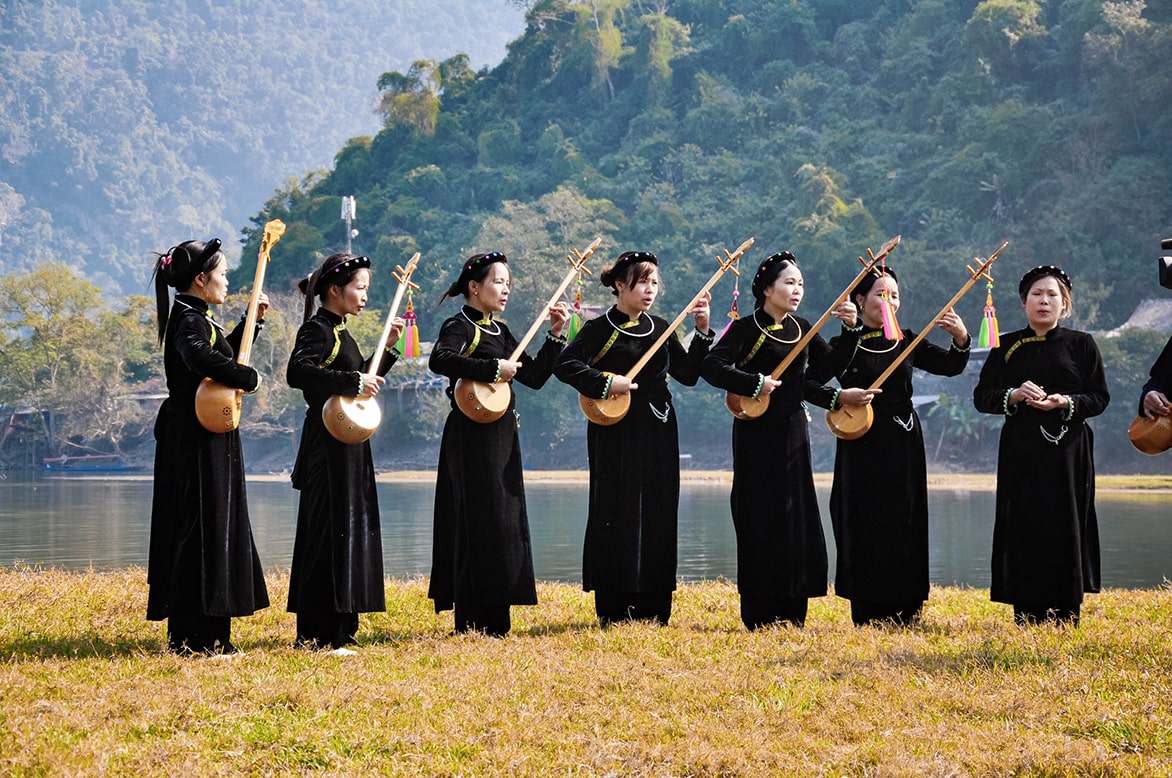Tay people are one of the first owners of ancient Vietnam. The Tay people have many long-standing traditions and unique cultural identities. Tay group is the second largest ethnic group in Vietnam

Tay People’s History
The Tay people were in Vietnam relatively early, toward the end of the first millennium BC, and were among the earliest owners of ancient Vietnam. The Tay ethnic group is Vietnam’s second biggest ethnic group, with over 1.7 million people (2009 figures).
Where do they live?
The Tay people are mostly found in the valleys of northeastern provinces such as Quang Ninh, Bac Giang, Lang Son, Cao Bang, Bac Kan, Thai Nguyen, Ha Giang, Tuyen Quang, Lao Cai, and Yen Bai. Traditional Tay housing consists of three types: stilt homes, half-stilt and half-earth buildings, and defensive houses. The stilt house is the most common traditional home form, with a typical construction of a five-compartment, three-compartment, or one-compartment, two-wing stilt house with an ax-shaped diagonal roof that is low about the floor level. The roof is covered with grass, palm fronds, bamboo, or tiles.
Tay Language: A Linguistic Journey
According to the 2019 Survey of 53 Ethnic Minorities, the Tay ethnic group has 1,845,492 individuals. There are 918,155 males and 927,337 women. The language is part of the Thai-Kadai linguistic family.
Religious beliefs
The Tay people have a variety of folk beliefs, including worshiping ancestors, midwives, Bodhisattva Guanyin, and Tao Quan inside the family, earth gods beyond the village, tutelary gods in some areas, and pagodas to worship Buddha. Life cycle rituals are also very significant in the Tay people’s spiritual lives.
Costume of Tay people
The Tay people’s garments are mostly constructed of dark indigo cloth with little ornamental motifs. Men’s apparel has a four-piece blouse with a chest slit, fabric buttons, a round neck, tiny and long sleeves, and two pockets on either side of the shirt. Pants are made in the manner of crippled legs and waistbands. Women’s costumes often include two shirts, a short blouse and a long shirt, slacks or skirts, belts, a hair tie, and a square scarf draped around the head. A blouse is a short, thin shirt made of white or light-colored cloth and worn within an ao dai. The shirt features four sides, a chest split, a round neck, short sleeves, and two little pockets at the hem. The ao dai is a five-body shirt with five fabric or brass buttons on the right armpit, a long belt wrapped around the belly and fastened behind, reaching down to the level of the thighs, a round neck, and long, thin sleeves.

Tay people’s Artwork
The Tay people have several folk songs, including Luon, Then, Quan Lang, Vi singing, lullabies, and Dong Dao singing.Luon is a popular love song between men and women, performed in homes and during festivals, weddings, new house celebrations, and when guests spend the night in the hamlet. Then is regarded a unique folk song. Historically, it was almost exclusively employed at ceremonies in the form of chanting, and when sung, it may be mixed with both dancing and music. Quan Lang singing is exclusively performed during weddings and is a type of repartee singing between representatives of the groom’s and bride’s families. The lute is a musical instrument that is used in all of the Tay people’s spiritual and cultural activities, similar to the soul in Tay traditional song and dance.

Conclusion
The Tay ethnic minority has made major contributions to Vietnam’s cultural variety and economic prosperity. The Tay people have attracted the curiosity of many due to their lengthy history, diversified culture, and distinctive traditional traditions. Please contact
Yesd right away to discover more about the customs of Vietnam’s numerous ethnic groups, as well as their diverse places !



